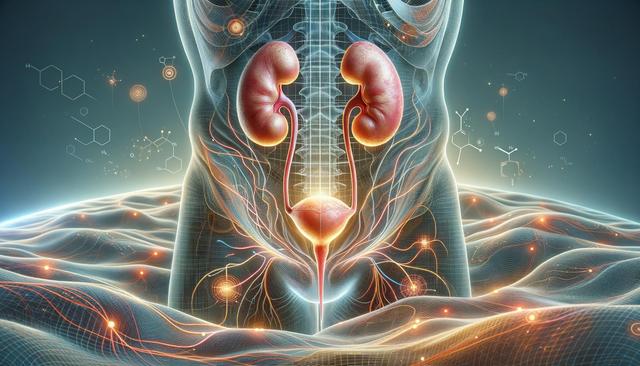Recognizing the First Signs of Bladder Cancer
Early detection of bladder cancer plays a crucial role in determining the course of treatment and improving outcomes. Identifying the First Sign of Bladder Cancer can be challenging, as symptoms may overlap with other less serious conditions. One of the most common early symptoms is bladder infection blood in urine, medically known as hematuria. Although this symptom can be painless, it often prompts individuals to seek medical attention. Other early signs may include frequent urination, pain during urination, or an urgent need to urinate even when the bladder is not full.
It is important to differentiate bladder cancer symptoms from those of common urinary tract infections. While both may present with similar signs, persistent or recurring symptoms should not be ignored. If blood in the urine occurs without an obvious cause, such as a known infection or kidney stone, further investigation is warranted. Early consultation with a healthcare provider increases the likelihood of identifying bladder cancer in its initial stages when treatment is generally more effective.
Symptoms Specific to Women
Bladder cancer symptoms can vary between men and women, and sometimes the signs are misattributed to gynecological or hormonal issues. Understanding What are the Symptoms of Bladder Cancer in Women is essential for timely diagnosis. Women may experience the following:
- Pelvic pain or pressure not associated with menstruation
- Increased urinary urgency or frequency
- Urinary incontinence
- Recurring urinary tract infections
These Bladder Cancer Symptoms in Women can sometimes lead to a delay in diagnosis, as they mimic common female health issues. For this reason, persistent or unusual urinary symptoms should prompt further evaluation. Women are encouraged to advocate for themselves and request further testing if symptoms continue despite treatment for presumed infections or other conditions.
How Bladder Cancer Progresses and Spreads
Understanding the progression of the disease helps patients and caregivers comprehend the urgency of early detection. One frequently asked question is: Does Bladder Cancer Spread Quickly? The answer depends on the type and stage of the cancer. Non-muscle-invasive bladder cancers tend to grow slowly and are often confined to the bladder lining. However, muscle-invasive types can spread more rapidly to nearby tissues and organs.
Bladder cancer can metastasize through the lymphatic system or bloodstream. Common sites for metastasis include:
- Pelvic lymph nodes
- Liver
- Lungs
- Bones
Regular follow-ups and imaging tests are important to monitor for any progression. Understanding how the cancer can spread reinforces why early detection and consistent monitoring are vital to managing the disease effectively.
Diagnosing Bladder and Gall Bladder Cancer
Accurate diagnosis is the cornerstone of effective treatment. When symptoms like bladder infection blood in urine or pelvic discomfort persist, healthcare providers may perform a series of diagnostic tests. These often include:
- Urinalysis and urine cytology
- Cystoscopy (visual examination of the bladder via a scope)
- Imaging tests such as CT scans or ultrasounds
- Biopsy of bladder tissue
In some cases, symptoms may be linked to other conditions, including gall bladder diseases. A gall bladder cancer diagnosis requires different imaging and biopsy techniques, but distinguishing between the two is essential due to overlapping abdominal symptoms. While gall bladder cancer is less common, it should still be considered when evaluating persistent, unexplained symptoms in the abdominal and urinary regions.
Recognizing Recurrent and Advanced Symptoms
After initial treatment, some individuals may experience a return of symptoms. Recognizing the Signs and Symptoms of Recurrent Bladder Cancer is critical for ongoing management. These may include:
- New or worsening hematuria
- Pelvic or back pain
- Unintended weight loss
- Fatigue or weakness
Monitoring for these Symptoms of Bladder Cancer helps detect recurrence early. Patients in remission should maintain regular follow-up appointments, including cystoscopies and imaging tests, to ensure any new growths are identified promptly. Understanding that recurrence is possible highlights the importance of a proactive approach to health, even after successful initial treatment.
Conclusion: Taking Action Through Awareness
Bladder cancer is a serious condition, but with greater awareness of its early signs and symptoms, individuals can take timely action. Recognizing the First Sign of Bladder Cancer, understanding how it can spread, and identifying Bladder Cancer Symptoms in Women or indicators of recurrence are all essential for improving outcomes. While symptoms may overlap with less severe conditions, persistent signs—especially blood in the urine—should not be ignored. Early and accurate diagnosis, whether for bladder or gall bladder cancer diagnosis, ensures that treatment can begin when it is most effective. Staying informed and attentive to changes in urinary or abdominal health empowers individuals to seek proper care and contribute to better long-term management of bladder cancer.
